This October, Frieze week in London marked the city’s first in person art fair and auctions since 2019, returning some sense of normality to the long-disrupted art world calendar. The week was bolstered by a flurry of exhibition openings, both institutional and commercial, including Frieze’s new exhibition space on Cork Street, the widely lauded flora Anderson show at Thomas Dane and Tate Modern’s turbine hall commission by Anicka-Yi, which further energised the week.
Frieze fair itself, providing the back drop to the week, had a notably more global feel compared to the recent instalment of Basel. A number of high-profile Indian, Bangladeshi and Latin clients were spotted as well as some high-level American collectors, including Jimmy Iovine and Rosa and Carlos de la Cruz. Sales reports were positive and several prominent seven figure sales were reported by dealers and galleries for works by Günther Förg, Kerry James Marshall and Alex Katz, among others.
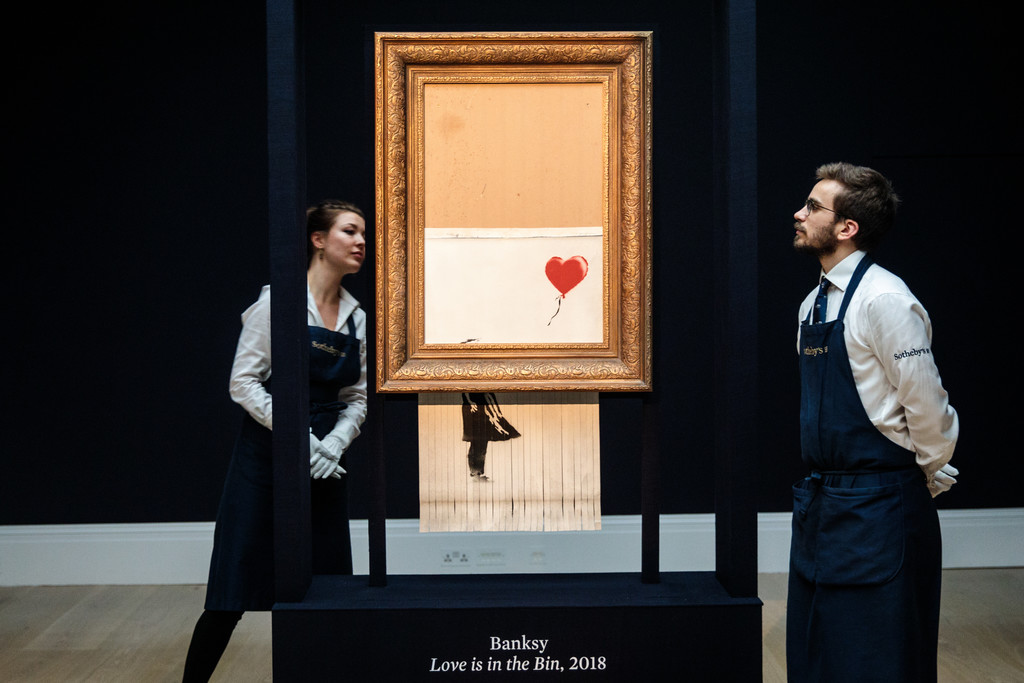
Punctuating Frieze week were the evening sales, kickstarted by Sotheby’s totalling £55.3 million (hammer) against a presale estimate of £39.1 – 54.2 million, followed by consecutive sales with Christie’s and Phillips held in the afternoon to capture Asian and American bids. Christie’s totalled £54 million (hammer) against a presale estimate of £44.8 – 64.2 million and Phillips totalled £20.5 million (hammer) against the £16.2 – 23.3 million estimate.
The main auction headline of the week was the Banksy record for the previously shredded painting, newly titled Love is in the Bin, for which Sotheby’s were accepting cryptocurrency. Hammering at £16 million (£18.6m premium) to an Asian buyer, it surprisingly did little to help the robustly estimated Balloon Girl diptych at Christie’s the next day which sold on one bid to the guarantor at £2.5 million (hammer).

Also of note was a new auction record for Hurvin Anderson whose works rarely come to market. The work sold at Christie’s for £6.2 million (hammer) to New York based specialist Jennifer Wright after more than ten minutes of bidding. Christie’s also offered their first NFT in a European sale: a collection of three works, one Bored Ape Yacht Club edition and two Mutant Ape Yacht Clubs, which carried an estimate of £800,000 – 1.2 million. The lot hammered on its low estimate selling to Kosta Kantchev, a cofounder of the cryptobank Nexo Finance which has an NFT fund.
Aside from Anderson, the other auction records achieved during the week were primarily reserved for young rising artists whose primary markets remain inaccessible, forcing collectors to the secondary market to compete for access, in turn driving these higher prices. Works by Cinga Samson, Shara Hughes, Serge Attukwei Clottey, Hilary Pecis, Jadé Fadojutimi, Issy Wood, Tunji Adeniyi-Jones, were among those selling significantly in excess of their estimates. Yet with only a handful of works by these artists previously sold at auction, it is easy for new price levels to be achieved. The most talked about in this category was young artist Flora Yukhnovich, graduating from her MA just four years ago, she achieved a new artist record of £1.84 million hammer (£2.3 million with premium), which put her on a similar price level to stalwart artists such as Cy Twombly also in the same sale. Christie’s and Phillips also had works by Yukhnovich which sold for exceptionally high prices, both in excess of £500,000.

Phillips’ evening sale was particularly populated by said artists which no doubt contributed to the success of their sale total against the pre-sale estimate, with works by Polke, Warhol and Milton Avery receiving more measured bidding compared to the frenzy for other artists. In support of this activity throughout the evening sales, another key conclusion from the week was the remarkable success of the day sales, all totalling in excess of their pre-sale estimates, across all auction houses. It continues to indicate the price points at which collectors have the deepest appetite currently, possibly a characteristic of an increasingly younger collector base entering the market, with Sotheby’s noting over a quarter of their evening sale bidders being under forty. Despite bidders predominantly chasing younger artists across the auctions, the main value of the sales remained with artists like Gerhard Richter, Jean-Michel Basquiat, David Hockney, Lucio Fontana and Alexander Calder, whose works have significantly higher price points, just with fewer bidders competing for the lots.
Image 1: Photo by Jack Taylor/Getty Images Image 2: Courtesy of Artnet Image 3: Courtesy of Artnet
FURTHER READING
- The Fine Art Group Art Advisory Team at Frieze LA
- The Asking Price: Understanding Value 1
- What to Hang on Your New Walls: The 5 Golden Rules
Dislocated from the more familiar June spot, Art Basel opened the autumn season in September 2021. After a long period of forced abstinence from art fairs, commercial galleries, collectors and advisers alike are buoyed by the return of such significant large-scale events in person. While the pandemic has hastened a rationalization of the annual fair calendar, with numerous casualties, the Basel Fair brand is set to retain its position at the apex of the art market.
Within the wider context of the past eighteen months, that Art Basel successfully opened at all in September 2021 is a cause to celebrate and a clear milestone along the progression to a post-pandemic art world. As much as attendees might rush to embrace normality and each other once again, there were clear signs we’re not quite back to business as usual. Fair attendance was strong, given the circumstances, with 60,000 attendees, compared to 93,000 in 2019.

Most notable of the absences were American and Asian buyers, a trend likely to continue for some time, with collectors and the associated trade less enthusiastic about crossing continents for fairs, but very happy to travel regionally. Indeed, European and American collectors could only look on jealously in May 2021 when Art Basel, Hong Kong opened, the brand’s first since 2019. In mainland China, fairs had opened as early as November 2020 with Art021 and West Bund in Shanghai, albeit with strict quarantine measures in place. Americans may similarly look forward to Art Basel, Miami Beach, slated to take place in December 2021. This is likely to retain the usual Latin American inflection, but likewise to be thinner on European and Asian collectors.
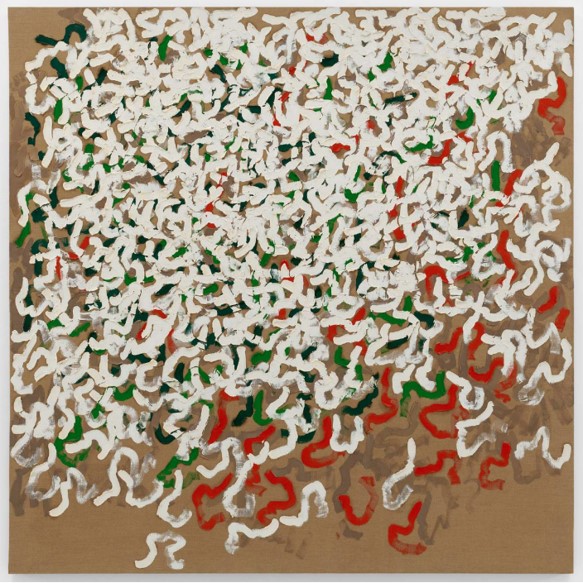
Despite a decrease in footfall, and a raft of enhanced safety protocols in place, galleries appeared to chalk up a steady stream of transactions. While the more expensive works at the fair – a 40 million USD Basquiat with Van de Weghe and a 26 million USD Robert Ryman with David Zwirner – appeared to go unsold, numerous seven figure works found new homes but the vast majority of sales were under 1 million USD. The highest reported sale being a 1939 Kandinsky, Voisinage, sold by Helly Nahmad for 7 million USD.
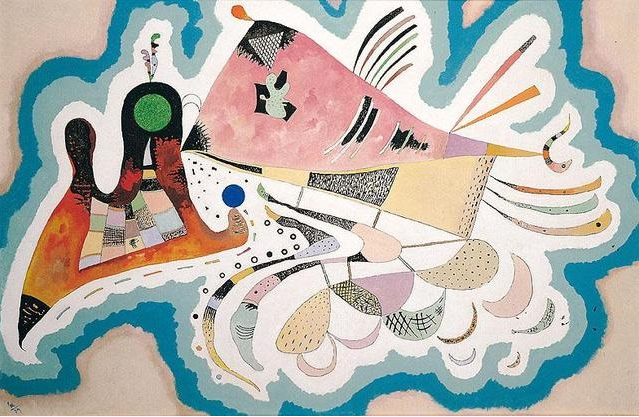
Pre-selling, already commonplace before the pandemic, is now vital to a successful fair for galleries. Online Viewing Rooms (OVRs) seem destined to accompany real world events for some time to come (if not indefinitely), as they significantly expand the fair’s reach beyond those known clients who get privileged early access to booth previews or those who can attend in person. Competition remains fiercest for a relatively small number of artists whose markets currently burn white hot. For galleries this can create the decidedly high-quality (but nonetheless highly fraught) problem of deciding which longstanding client or esteemed museum trustee will be allowed to buy new work by such fought over artists as Michael Armitage, Lisa Brice, Lynette Yiadom-Boakye, Cecily Brown, Kerry James-Marshall, Laura Owens or Nicolas Party.
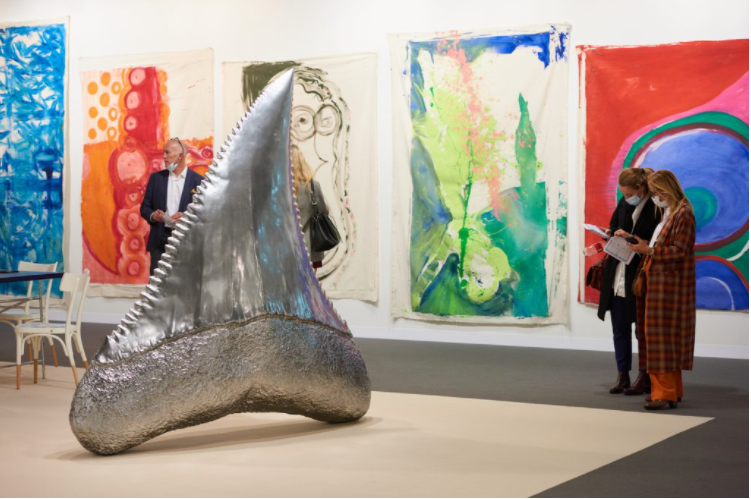
Around town the usual cluster of satellite events took place, with Liste – the fair for bleeding edge contemporary art – among the most important. The scrappy but revered Liste acts as a crucial feeder come proving ground for galleries aspiring to participate in Art Basel’s Statements section which spotlights emerging artists. Since inception twenty-five years ago, Liste has historically taken place at Werkraum Warteck pp, a former brewery roughly fifteen minutes’ walk from the main fair. A labyrinthine post-industrial location, with booths spread across intersecting floors, long, narrow corridors and tight spaces, the pandemic forced a historic and first-time relocation to the Messe Basel Hall 1.1, the same complex as Art Basel. While lacking the innate hipster chic of the fair’s usual location, this relocation into a more typical art fair context – wide open space, high ceilings, white cube booths in a regular layout – was hugely beneficial for visitors. The intentionally ‘rough’ finish of the Werkraum Warteck pp can be unkind to newer art, which is often willfully anti-commercial or ‘provisional’ (unfinished looking). The uniformity of white booths, while perhaps seen by some exhibitors as limited, had the contrary effect (in our view) of formalizing and professionalizing the presentations. Although this move may be temporary, we can’t help but hope it outlasts the pandemic.
Image 1: Courtesy of Jacques Demarthon/AFP via Getty Images; Image 2: Courtesy of David Zwirner; Image 3: Courtesy of Art Basel Karma International 2021; Image 4: Courtesy of Artnet
FURTHER READING
- Henry Little the State of the Art Market at TheMerode
- The Asking Price: Understanding Value 1
- The Asking Price: Understanding Value 2
“The industry proved popular during the depths of the pandemic as ultra-wealthy individuals tapped art collections as a source of cash when other assets were frozen or plunging in value.”
Our CEO of Art Finance, Freya Stewart, and Bloomberg journalist Harriet Habergham discuss the increasing use of art finance, and the current appetite amongst investors for debt products backed by art.
Please read the full article here.
“Our in-house art experts have years of experience in fine art valuation, which means we are able to assess the suitability of potential collateral accurately and quickly. The more difficult artworks for lending purposes are particularly atypical examples by an artist, or those which are outsized.”
Founder and CEO Philip Hoffman spoke to Andrew Shirley and The Wealth report, Knight Frank’s global thought-leadership publication for its UHNWI clients and their advisors.
Together, they discussed art as an investment, and how it is used as an asset to borrow against by clients across the globe looking to release meaningful capital from their own collections of art and jewellery.
To learn more about borrowing against art and the loan process here at The Fine Art Group, please click on the link below.
https://www.knightfrank.com/research/article/2021-08-02-fine-art-as-an-investment
Art can be the glue that binds a family and can create a lasting financial legacy. Anita Heriot, President of the America’s, shares her art collection journey with one Tiger21 family.
At the most recent installment of summer sales, traditionally held in London in June, Phillips instead started the cycle in New York, as part of the now common shifting of auction locations and dates.
Held at their newly opened headquarters, the Phillips sale generated an above estimate $98 million hammer, more than double their 2020 total and up nearly 20% from its May 2019 sale. That being said, it’s important to note Phillips opted not to hold a London sale, pushing their ‘May sale’ to June which no doubt assisted volume. Strong evidence of this was the unusual inclusion of a Winston Churchill painting, which surely was destined for a London summer sale but was moved into their hybrid New York lot list, likely impacting the result, selling on just one bid.
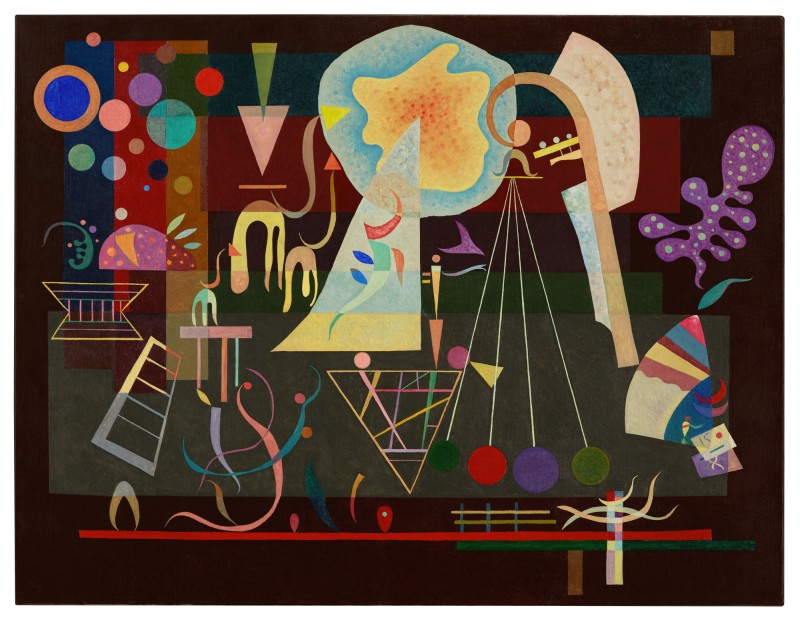
The following week Sotheby’s and Christie’s presented their multitude of cross category evening sales, although in fact held in the afternoon so as to allow for global bids from New York and Hong Kong. Sotheby’s staged a British Art Evening sale, then followed by a Modern & Contemporary Art Evening sale which traversed art history with works by Degas and Monet to Mark Bradford and Julie Curtiss. The top lot of the evening being the 1937 Kandinsky estimated at £18 – 25 million, it sold for £18.3 million hammer (£21.2 million premium). Their eighty-three lot sale totalled a hammer of £130.3 million against a presale estimate of £119.7 – 170.3 million. Twelves lots, however, were withdrawn, some well before the sale and whose presence is now unknown to all but Sotheby’s as the auction house rapidly removed them from their online catalogue where possible. These works totaled well over £10 million in low estimates, which technically results in a below target sale total.
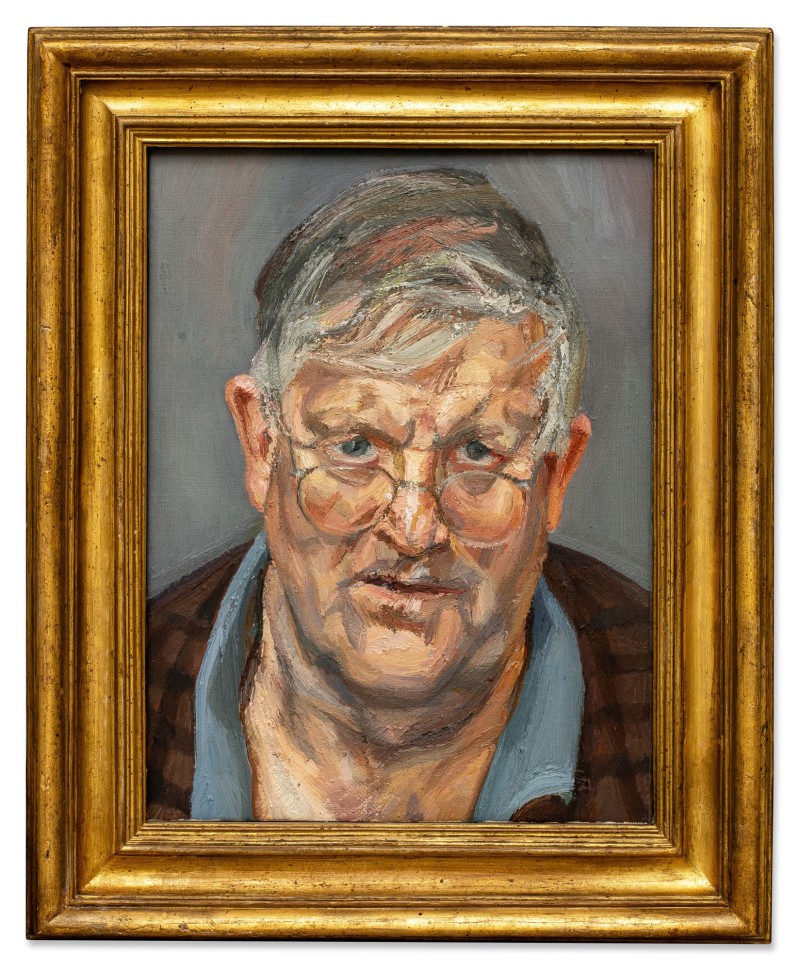
There was strength in the early part of both Sothebys’ evening sales, with deserving lots including Hockney’s Gladioli painting and Freud’s Portrait of David Hockney performing well. The latter for a hammer price of £12.8 million (£14.9 million premium) selling to James Sevier’s client after being chased by more than six bidders through to the top end of the bidding. Towards the second half of both sales, however, bidding began to feel thin with many lots selling on a single bid around or often below the low estimate. Over half of their sale was guaranteed and the lack of deep bidding proved this was required to help ensure their 93% sell through rate.

Christie’s opted to combine the 20th and 21st centuries into one sale with the collection of Francis Gross and a Paris evening sale following on, in the now normal relay fashion. With a total of ninety-four lots across the three sales, and a presale estimate around £114 – 167 million, (not including the four lots that were withdrawn, comprising just over £5 million in low estimate) the sales brought in a total of £119 million hammer. Considering the withdrawn lots, the three sales achieved within the low end of their presale expectations and similarly to Sotheby’s, apart from some key works by Picasso, James Ensor and Bridget Riley, several works sold on just one or two bids. Interestingly none of the Paris lots were guaranteed, compared to over half of the London auction, which resulted in an 87% sell through rate across all three sales. Top lots by value included Picasso’s L’Étreinte (1969) selling for £14.7 million (premium) and a René Magritte, La Vengeance (1936) which sold well above its €6 – 10 million estimate for €14.6 million (premium).
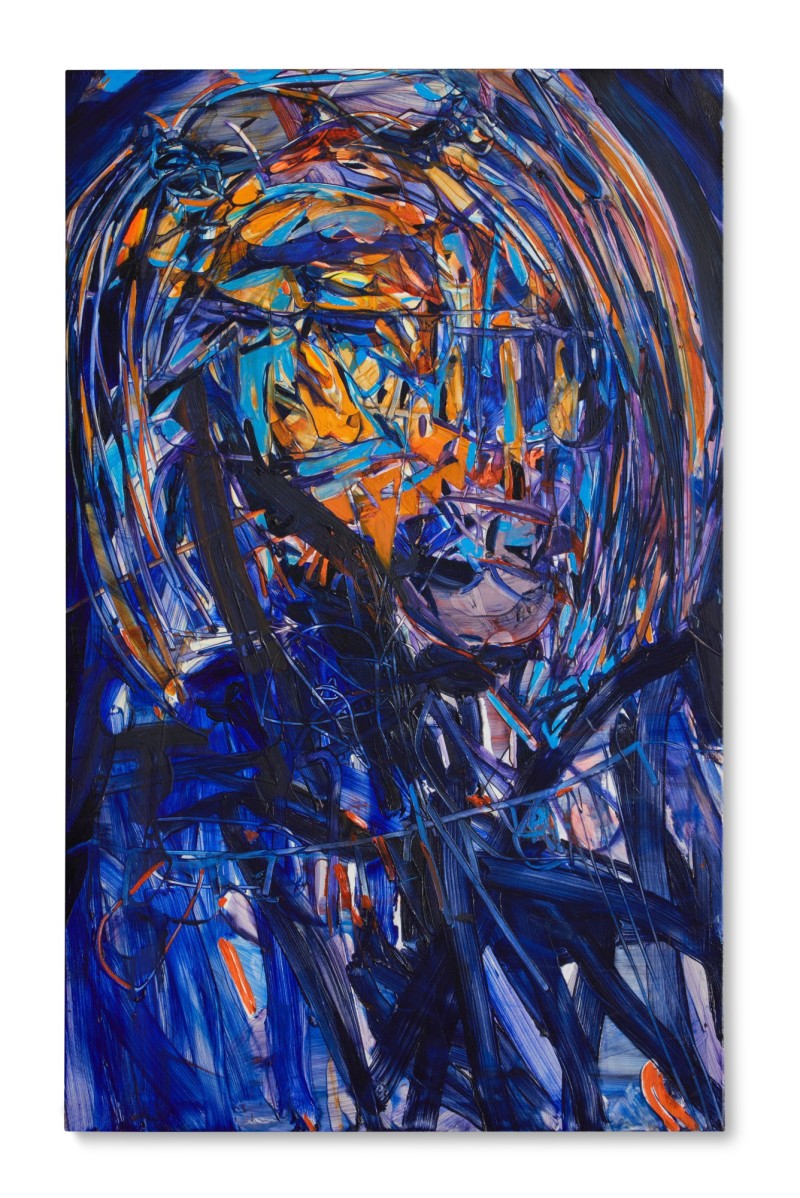
The strength of the Asian market continued to help propel these auctions. Phillips saw strong Hong Kong bidding on several lots, primarily for younger artists. Lot one at Sotheby’s, Jadé Fadojutimi, was chased by almost exclusively Hong Kong bidders and several clients of Patti Wong bid significantly on the higher end lots, notably Degas and Picasso. And similarly at Christie’s, artworks by Condo, Degas, Kusama, Chagall, Miro, Leger, Klee and Stanley Whitney all went to Hong Kong phones, with Asian bidding on over a third of lots in the London segment.
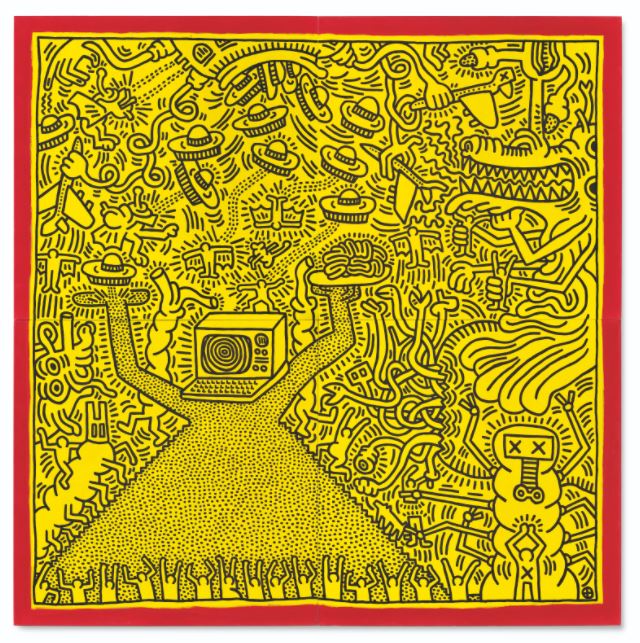
Also of note is the increasing number of lots for which the auction houses are accepting cryptocurrencies. Sotheby’s notionally accepted Ether or Bitcoin for their Banksy Laugh Now painting estimated at £2.5 – 3.5 million, it sold for a single bid at £2 million hammer. Christies also offered this for their 1984 Keith Haring painting estimated at £3.9 – 4.5 million, again selling on just one bid for £3.9 million to the third-party guarantor. Whilst the houses are clearly trying to tailor the works they select for this to a specific clientele, it certainly didn’t have the effect the consignors and houses alike were hoping for and will be interesting to see how this develops in future sales.
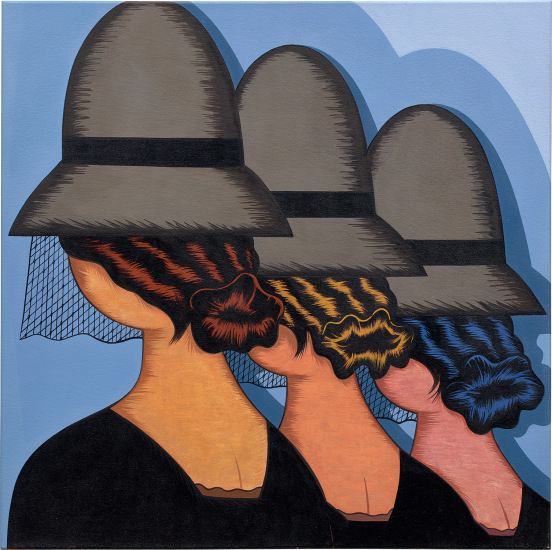
As has been the case over the last several sale cycles, emerging and historically under-represented artists continue to see the bulk of interest. Phillips set a new record for Avery Singer at $4.1 million (premium); Singer’s previous auction high, $3.1 million, was set just a month ago at Christie’s Hong Kong. Records were also set for Julie Curtiss, whose painting Three Widows (2016) sold for $466,200, more than double the $150,000 high estimate, and Titus Kaphar, whose portrait sold for just over $1 million, well above its $400,000 high estimate.
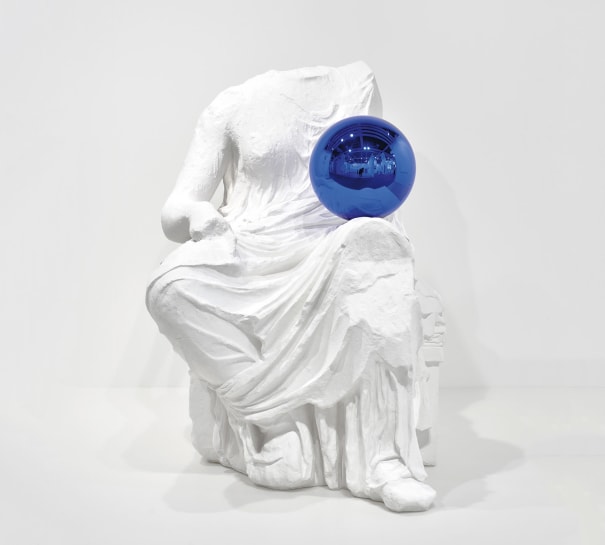
The reduced estimate for Phillips’ top lot, further demonstrated where heat in the market still lies. David Hockney’s A Neat Lawn (1967), was reduced from a low estimate of $12 to $9.5 million, accompanying a last minute third party guarantee, to whom it sold. Also of note in the Phillips sale was Jeff Koons’ Gazing Ball sculpture, surprisingly offered with no reserve, selling for $800,000 hammer ($998,000 premium).
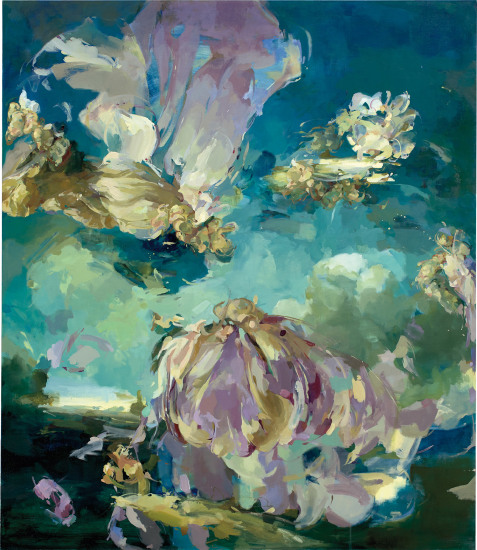
In the current auction climate prices for young, figurative painters are exceeding that of some of the most historically expensive artists at auction, including Koons and Picasso. The auction debut for Flora Yukhnovich, estimated at $60,000 – 80,000 in the Phillips day sale, being a prime example, selling for an astonishing $950,000 hammer ($1.2 million premium). With only five solo shows to date and the artist having never received an institutional exhibition, the level of speculative buying has reached new heights.
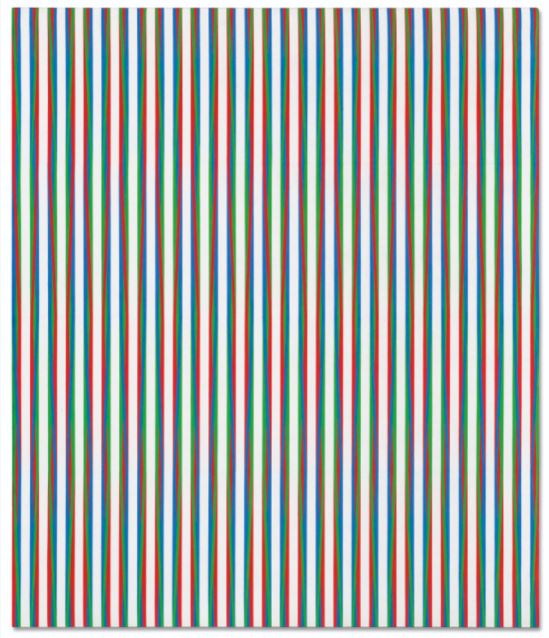
During the London sales the situation was similar but less aggrandized due to the material, instead emphasizing the limited demand for the more traditional areas of the Impressionist & Modern market. At Christie’s, an exceptional work by Kirchner, Pantomime Reimann: Die Rache der Tänzerin (1912) sold on just one bid for £6 million hammer, whereas works by George Condo, Elizabeth Peyton and Bridget Riley experienced much more global and spirited bidding. Riley’s Zing 2 (1971) successfully sold for £3.3 million (premium), clearing the high estimate of £2.2 million and marking the second-highest auction price for Riley to date.
The next marquee sale cycles in October are again traditionally held in London and then Paris, adding to the pressure for the houses to swiftly gather more material. Brexit and Covid restrictions seem to have weakened Europe’s auction positioning but perhaps some of the stronger consignments have been pushed towards the ‘Frieze slot’, typically the most major calendar moment for the London art scene. The results of October will help inform how some of the trends seen during these sales will develop. What is in no doubt, however, is the strength of the Asian auction market. Compared to a 43% drop in New York and 38% decline in London, Asia’s sales fell just 3% in 2020. With almost $900 million worth of art sold to date, 2021 is poised to be another record for the region.
Image 1: Image courtesy Sotheby’s; Image 2: Image courtesy Sotheby’s; Image 3: Image courtesy Christie’s; Image 4: Image courtesy Sotheby’s; Image 5: Image courtesy Christie’s; Image 6: Image courtesy Phillips; Image 7: Image courtesy Phillips; Image 8: Image courtesy Phillips; Image 9: Image courtesy Christie’s
FURTHER READING
- What Will Collectors Buy in 2022?
- Ten Reasons “Going in Alone” at Auction is a Mistake
- Protect Your Investments While Divesting Tangible Assets
“Since the pandemic, we have seen increased demand as people want to retain more personal liquidity. It makes sense to offer the service to buyers at auction as well as on the private market.” -Freya Stewart
Our CEO of Art Finance Freya Stewart speaks to Melanie Gerlis at the Financial Times to discuss purchase financing and its role in the art market. Freya highlights the benefits of purchase financing, particularly in regards to the upcoming London auctions.
To read the article in full and learn more about the qualifying works for financing from The Fine Art Group please click here.
Our CEO and Founder Philip Hoffman appeared on this week’s episode of the ArtTactic Podcast. Philip discusses his decision to acquire Pall Mall Art Advisors during a trend of consolidation within the broader art market and uncertainty of the pandemic. He also shares his views on the current landscape of the art market, from what collectors are looking for and the importance of appraisals to a discussion on the impact of Covid-19.
To listen to the podcast in full and learn more about where valuable opportunities in the art market lie, please click here.
A welcome return to the regular auction schedule saw Christie’s and Sotheby’s execute five major evening sales across three nights totalling $1.29 billion, with Phillips opting instead to hold their New York sales in June at their new headquarters. Despite Christie’s merging their Post-War & Contemporary and Impressionist departments, previously holding just one evening sale, the auction house held two 21st and 20th Century evening sales, proving that the sale categories continue to be malleable depending on the material the houses bring in. Despite heavy investment in their live streaming technologies from both sides, Sotheby’s format still triumphs in terms of streamlining global bids from multiple desks. Most refreshing, however, was room bidding on several lots during the Sotheby’s sale, fielded by auxiliary auctioneer Quig Bruning. Diego Rivera’s Retrato de Columba Dominguez de Fernandez (1950) even sold to a woman in the room for $7.4 million (premium) and marking a promising step forward for the next round of sales.
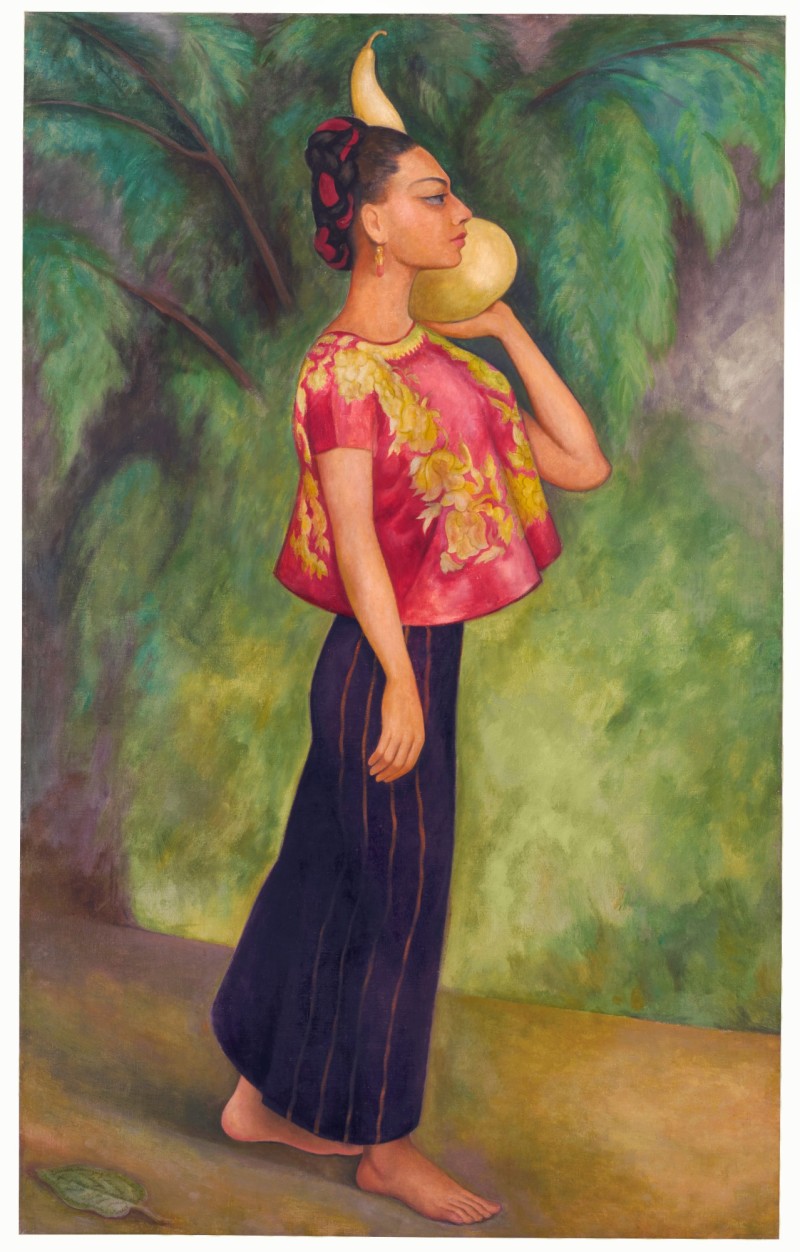
Despite Christie’s achieving an overall higher turnover with $691.6 million (premium) versus $597 million (premium) for Sotheby’s, in terms of material it felt as if Sotheby’s had the lead for the week. This was largely due to the stand alone Marion Collection sale which achieved $157.2 million (premium). Despite totalling towards the lower end of the presale estimate due to four unsold works, the sale saw new auction records achieved for Kenneth Noland, Larry Rivers and Richard Diebenkorn and impressive bidding on the major Warhol, Elvis 2 Times (1963), whose market has been somewhat subdued in recent years. Estimated at $20 – 30 million, the double portrait sold for $32 million hammer ($37 million premium). Christie’s also had comparatively healthy Warhol results in their 20th Century sale later in the week, with both lots reaching around their high estimates.
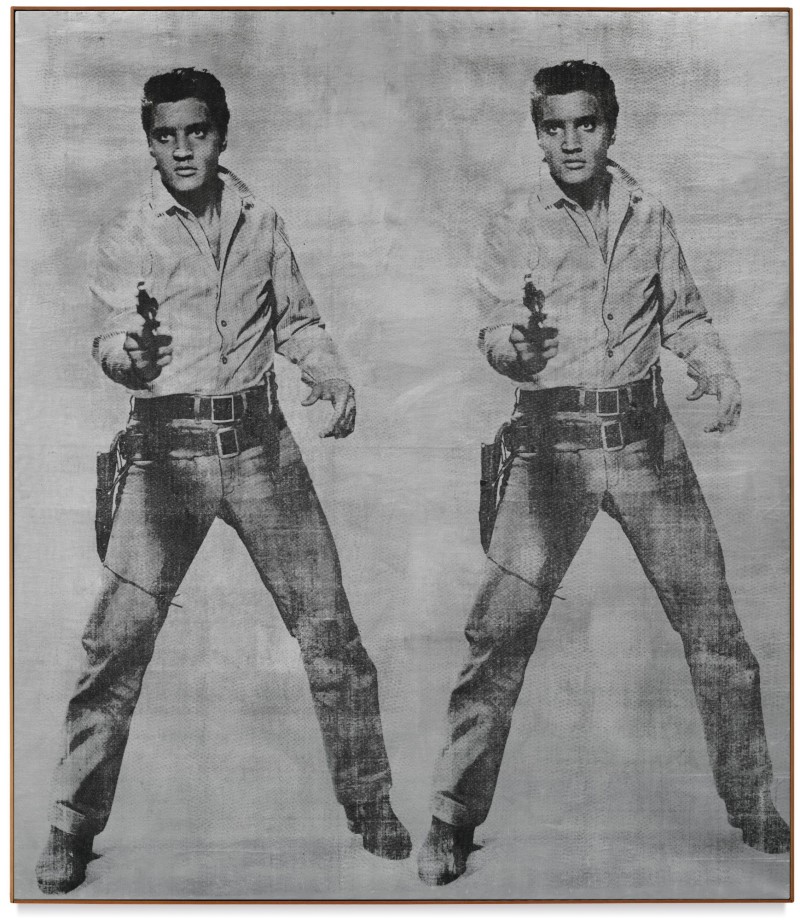
On the completely opposite end of the art historical timeline, following the recent headline grabbing Beeple price, Christie’s unsurprisingly opted to include an NFT artwork in their 21st Century evening sale which no doubt boosted their bottom line as 9 Cryptopunks sold for $16.9 million (premium), estimated at $7 – 9 million. A few weeks before Phillips and Sotheby’s had both followed suit, holding their own standalone NFT auctions selling for several million dollars. While their value is currently the subject of much speculation, with the new evening sale status NFTs seem to be gathering staying power, at least for the short term.

In the spirit of technological shifts, the consignor and Sotheby’s opted to allow their Banksy Flower Thrower painting to be paid for in cryptocurrency which undoubtedly boosted the extraordinary result hammering at $11 million ($12.9 million with premium) to a west coast collector, against an estimate of $3-5 million. Notably Sotheby’s required their buyer’s premium to be paid in US dollars.
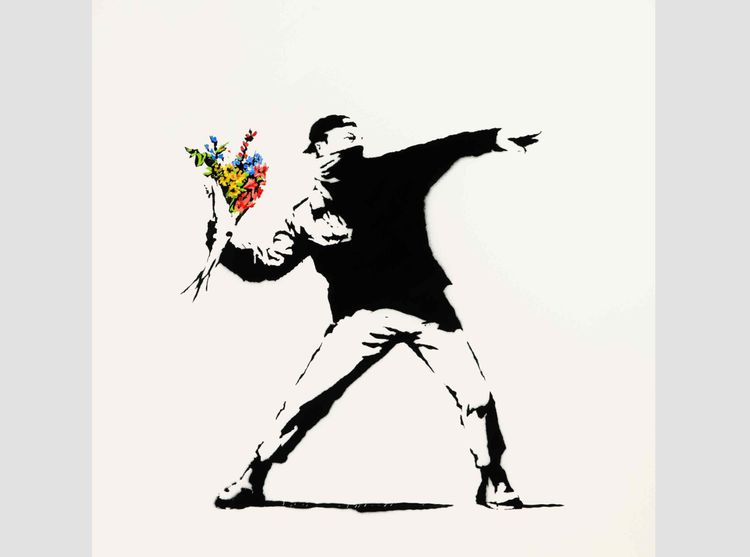
Strength of the Asian market continued and in terms of bidding roughly a third of lots across all the sales saw bidding from Asia. Christie’s reported that the Asia-Pacific area represented 25% of buyers from their 21st Evening sale and 20% in their 20th Century evening sale. Key lots by George Condo, Leonor Fini, Picasso’s Femme assise en costume vert and a Monet still life, among others, were all sold to phone bidders from Sotheby’s and Christie’s Hong Kong desks.
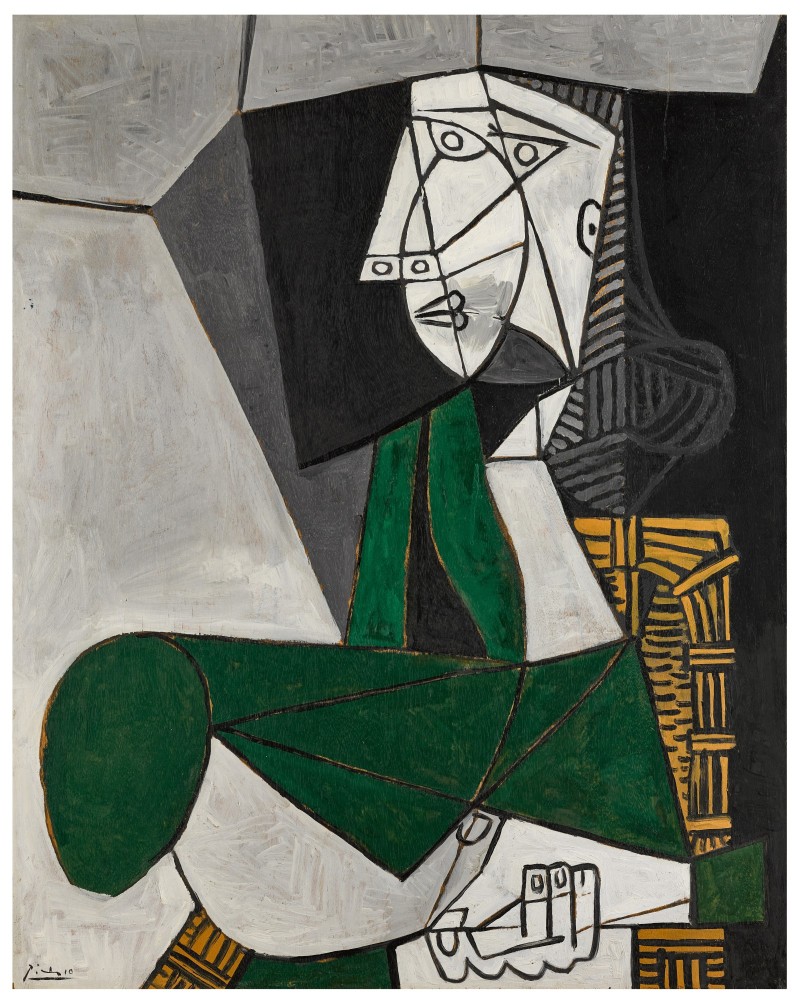
The major turnover generator of the week for both houses was Jean-Michel Basquiat. Christie’s lot, In this Case (1983) sold by Valentino co-founder Giancarlo Giammetti, went beyond its unpublished pre-sale estimate of around $50 million to a New York phone bidder for $81 million hammer ($93.1m with premium). Sotheby’s likely expected their top lot Versus Medici (1982) to do better but it sold to Lisa Dennison’s client Steve Wynn for $44 million hammer ($50.8 million with premium).

The result for Picasso’s Femme assise près d’une fenêtre (Marie-Thérèse) (1932) also showed the continued strength in long term value for the artist. Previously selling for $44.8 million in 2013, this time it went to Vanesso Fusco’s client on the phone for $90 million hammer ($103.4 million premium), the only lot of the week to sell in excess of $100 million including fees.
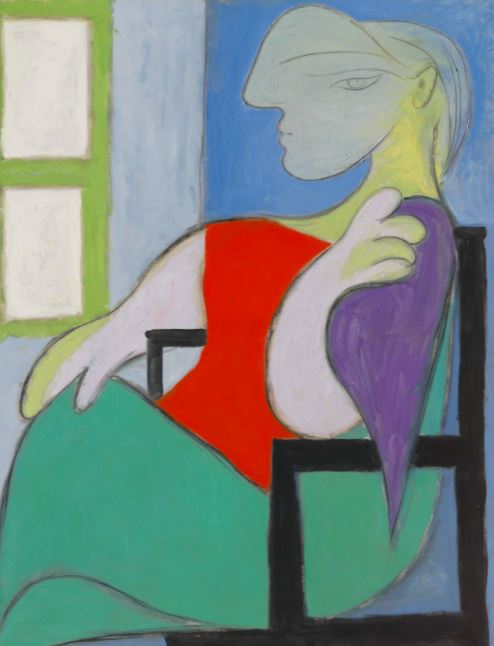
Despite some healthy bidding for Basquiat, Picasso and the major Monet waterlilies at Sotheby’s, these solid results were for deservedly A-grade material. Whereas works by other auction stalwarts including Gerhard Richter, Christopher Wool and Cy Twombly, among others, primarily sold on one or two bids. This is both a reflection of the continued selectiveness of the market as well as a shift in taste to the new generation of art stars, albeit at lower price points, where lots saw the most competitive bidding. Five artists under the age of forty-five set new auction records, notably Nina Chanel Abney ($990,000 premium), Lynette Yiadom-Boakye ($1.95 million premium) and Salman Toor ($867,000 premium) to name a few. Another noteworthy price from the week included a spectacular and deserved new auction record for Robert Colescott’s George Washington Carver Crossing the Delaware: Page from an American History Textbook (1975), selling for $15.3 million (premium) above the $12 million high estimate. The result was over sixteen times higher than the previous record of $912,500. The work sold to the Lucas Museum of Narrative Art in Los Angeles.

Overall, the results proved a healthy, recuperative global art market, following the past twelve turbulent months. Phillip’s delay to June may have assisted in slightly curbing supply but the successive slew of auction records and excellent sell through rates speak for themselves. The auction houses continue to show excellent adaptability to help ensure this, whether it be last minute lowering of reserves, withdrawals or the securing of guarantees. With 78% of works guaranteed by value in both Christie’s evening sales and 48% and 57% respectively in Sotheby’s Contemporary and Impressionist & Modern sales, these remain essential tools for the sustained stability of the auction market.
Image 1: Image courtesy Sotheby’s; Image 2: Image courtesy Sotheby’s; Image 3: Image courtesy Christie’s; Image 4: Image courtesy Sotheby’s; Image 5: Image courtesy Sotheby’s; Image 6: Image courtesy Christie’s; Image 7: Image courtesy Christie’s; Image 8: Image courtesy Sotheby’s
FURTHER READING
- Morgan Long Speaks with Barron’s About Guaranteed Works at Spring 2023 Auctions
- Watch The Educated Eye: How to Navigate a Multi-Category Collection at Auction
- May 2023 Auction Season: Our Team’s Top Picks & Insights
“We all miss the sense of occasion that comes with going to an auction,” Mr. Jennings said. “I’m really anxious to get into one.”
For the first time since the start of the pandemic, Sotheby’s invited a select few collectors and dealers to attend their live streamed auctions in real life, and finally bid in person rather than online or over the phone.
Managing Director Guy Jennings and Senior Director Morgan Long were recently asked to comment on this, speaking to The Wall Street Journal last week about their own viewing habits and how different it is to participate in the auctions from the comfort of their own homes.
To read the article in full, please click here.